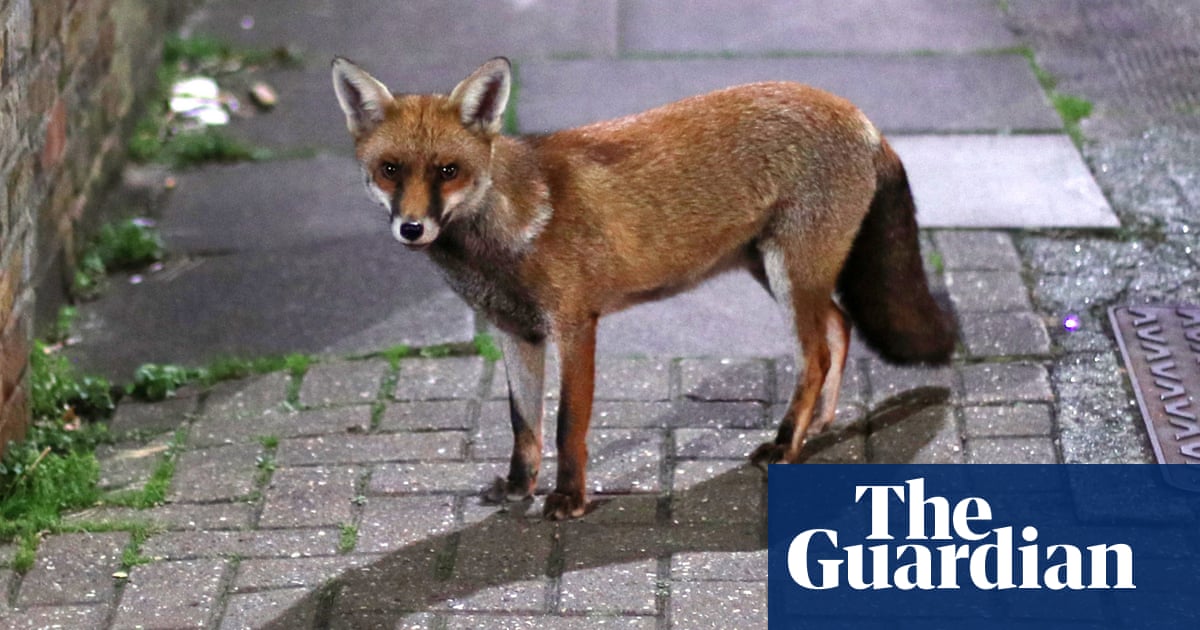图片源于:https://www.theguardian.com/environment/article/2024/jul/15/australia-foxes-risks-native-flora-fauna
Alex Abbey的安全摄像头在几周前捕捉到一些东方郊区悉尼他家后面的巷子里的东西。当他第二天观看凌晨2点的录像时,他惊讶地看到屏幕上有一只红狐。
“这很不寻常。这是我第一次在波茨角看到狐狸,”他说。
“我吃惊,但我也理解狐狸在[伦敦等城市中]很常见。”
Sebastian,要求不透露他的姓氏,对他的狐狸相遇有些心有余悸,也处在悉尼东部。
“我在沃克卢斯看守房子,忘记关上鸡舍,”他说。他照看的三只鸡和两只兔子在之夜没有存活。
“我不得不打电话给业主,这是一个有趣的电话,”他说。
宠物的丰富为狐狸提供了大量的猎物,这是城市成为这种引入物种的理想栖息地的原因之一。
Fox Scan监测网站显示,过去一年公众报告的集中情况是在悉尼和墨尔本。以往几年的数据不可用。
在悉尼,“非常高”的数量记录在Bayview,Kellyville,Blakehurst,Greystanes和Warragamba。Campbelltown,Collaroy,Cammeray和Roseville记录了密集的狐狸目击事件。
在墨尔本,高密度的狐狸被报告在Birrarung Marr,Williamstown,Glen Waverley,Maribyrnong,Kew East和East Melbourne。在South Melbourne,Elwood,Camberwell和Bentleigh记录了“非常高”的数字。
维多利亚州政府的研究估计,墨尔本每平方公里有16只狐狸 – 大约5000只狐狸分布在半径10公里的区域。澳大利亚国立大学的一项研究估计,全国的狐狸数量为170万只。
但狐狸数量是否在增加?
iNaturalist的用户在2022年在澳大利亚共做了947次红狐观察,2023年增加至1158次。但是,像Fox Scan一样,这些数字并不是人口规模或增长的可靠指标。
没有实质性的监测系统,专家们无法确认人口是否在增加,或者我们只是更经常讨论和报告狐狸,也许是因为社交媒体。
John Martin博士的Ecosure Consultancy的研究发现,悉尼的狐狸并不捕食受威胁的本土物种。但在丛林中,它们可能是继野猫之后的第二大捕食者,吃本地动物并推动一些物种走向灭绝,他说。鼠,蜥蜴,袋鼠,乌龟和鸟类都有风险。狐狸还传播疾病和杂草。
他说,它们与本土植物和动物的互动是复杂的。“但从最简单的角度来看,它们是非本地物种,所以它们实际上对环境产生了负面影响。
Trish Fleming教授,一位墨尔本大学的野生动物生态学家,表示城市中发现的狐狸数量“肯定在增加”,它们不仅仅是过客。
她说,狐狸是非常聪明的,可能是他们学会如何处理生活在城市环境中的问题,她说。
在珀斯追踪狐狸,她发现它们似乎避开可能遇到狗的花园,并学会“更好地利用栖息地”。因此,随着时间的推移,控制措施失败了。
如果你一直向外散播饵料,而狐狸不吃,那出生的下一代狐狸也有可能会有……因此,威胁物种的避免行为的发生, Fleming说。
Foxes choose cities as habitats because they are “full of resources,” she says, from unfenced rubbish tips to street litter and open rubbish bins, and “those resources are not seasonal”. Plus, they feast in our gardens.
“There is a mulberry tree on my neighbour’s property, and I [see] purple black poos as the foxes are coming through,” she says. “They are definitely eating mulberries.”
Fleming’s research has found foxes frequent municipal buildings and land, such as golf courses. Dense thickets and reeds close to waterways are good for hunting and refuge. Foxes also dig under car bodies (and chew their cables), and under big structures and around greenery.
This introduced species is not only a nuisance for humans.
Martin’s research found that foxes in Sydney do not prey on threatened native species. But in the bush, they are probably the second worst predator after feral cats, eating native animals and driving some species towards extinction, he says. Mice, lizards, wallabies, kangaroos, turtles and birds are all at risk. Foxes also spread disease and weeds.
With foxes now living on 80% of the Australian mainland, local councils are trying to control them. It’s a harder task in our cities, largely because baits, which are very effective for broad scale control, can poison pets.
Fumigation, trapping, detector dogs, thermal scopes (which detect heat from a live animal) and firearms are all used in management plans, says Gillian Basnett, the national feral cat and fox management coordinator with the Centre for Invasive Species Solutions. Everyone can help solve the problem by throwing away less food and making sure that waste is safely secured, she says.
Recording the foxes you see can also help.
“It’s a fantastic experience to be able to see a fox like that,” Murdoch University’s Fleming says. “But they are terrible for our native fauna”.





















